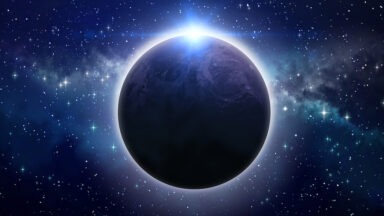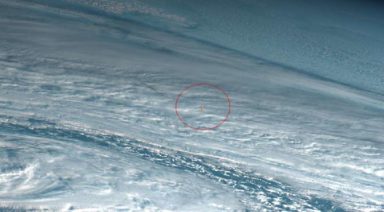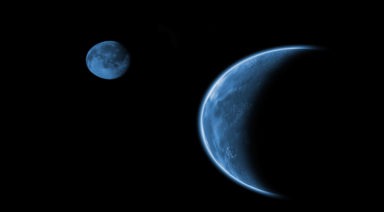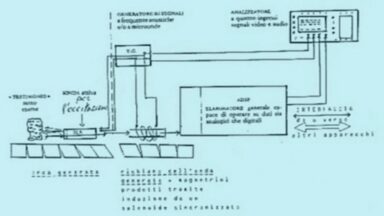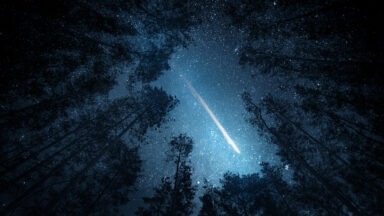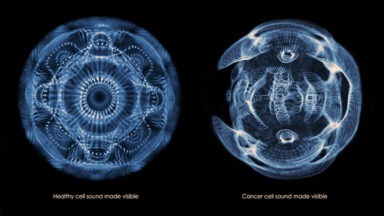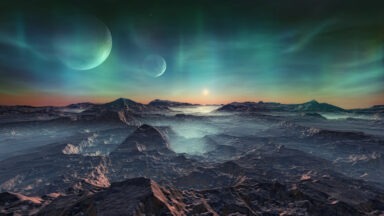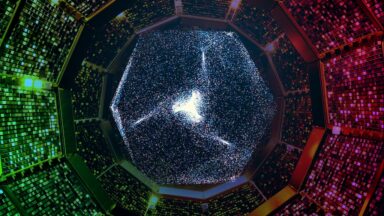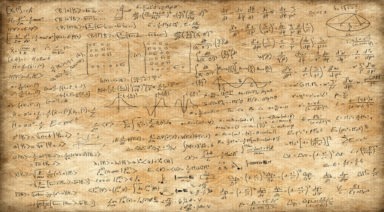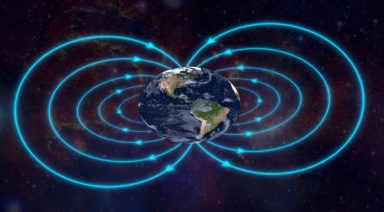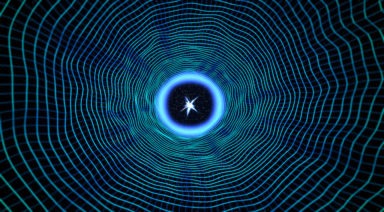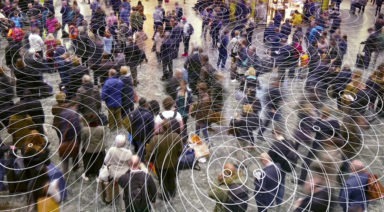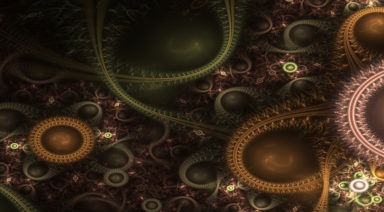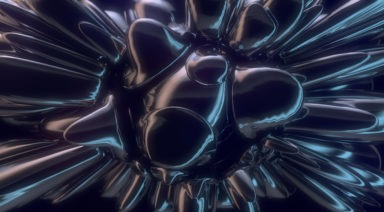What is Galactic Geometry?
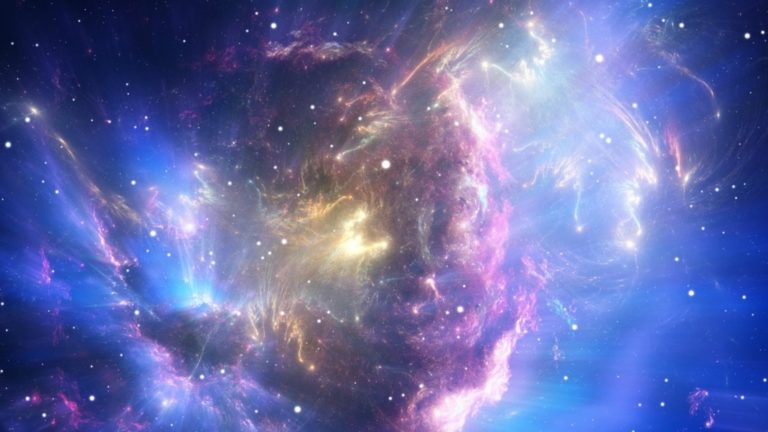
Geometry is fundamental to the study of galaxies. Geometric patterns appear in the process of growth and expansion of galaxies, and even how they are organized relative to one another throughout the universe. In this article, astrophysicist Dr. Erica Nelson sets the scientific stage for the evolutionary knowledge shared by David Wilcock in the latest season of Wisdom Teachings, which is all about “galactic geometry.” We learn that the universe is designed like a living, biological organism, and how metaphysical archetypes take form through physical mechanisms. At the heart of it all is — you guessed it — geometry.
A View of the Universe: Galactic Geometry
In the latest season of Wisdom Teachings, David Wilcock presents “scientific support for the idea that the universe itself is designed as a biological organism.” This is certainly not how I was taught to imagine the universe. Growing up, I remember learning that outer space is cold, inert, and lifeless over vast expanses. Entirely lifeless, in fact, except for our privileged little planet. To think of the entire universe itself as a living entity requires something of a reframing then.
In order to study a biological organism, we must first comprehend chemistry, as all biological activity is driven by biochemical interactions. In order to grasp chemistry, we must first know physics, or else all this talk of protons and neutrons has no context. Chemistry describes physical actions occurring in space, which is a good definition of physics. The basis of physics (and thus, of all other life sciences) is mathematics. Mathematics is based on number, and according to John Michell, “geometry is the purest visible expression of number.”
In order to better understand how geometry shapes our understanding of galaxies and the universe, I spoke via email to Dr. Erica Nelson. Erica is a fellow at the Max-Planck-Institut für Extraterrestrische Physik, where she is using “some of the most powerful telescopes on Earth and above it… [to] investigate the physical processes driving the assembly of galaxies.”
Dr. Nelson is a highly-decorated, Yale-educated astrophysicist. I majored in English and Creative Writing. Therefore, part of our conversation went like this:
David: What’s the first thing that pops into your head when you hear the phrase “galactic geometry?” Is there a particular name or formula that you immediately associate?
Erica: [Galactic] geometry is typically (and simplistically) quantified in terms of a Sérsic profile which parameterizes it in terms of radius (r_e) and how steeply the density of stars decreases from the center (the Sérsic index, n): I(r)=I_0(exp(-kr^(1/n)))
In all my years of wordsmithing, I have never until now used the word “parameterize” in a sentence. Score one for science. To be fair, she started out by saying that “geometry (or ‘morphology’ to an astronomer) is one of the most fundamental features of a galaxy… It is intimately related to the formation history of a galaxy and also seems to be the best predictor of how it will grow in the future.”
Macro Cosmic Structures
If geometry is so central to the study of galaxies, what does that geometry show us? This is the topic of the latest season (#24) of Wisdom Teachings with David Wilcock.
In episode 194, Wilcock cites NASA observations that galaxies are not equally distributed around the universe, but rather gather together in superclusters. Naturally, large clusters have a stronger gravitational pull, thereby attracting more mass in their direction and increasing their gravity even further. Dr. Nelson confirms this concept, saying “it’s often referred to as cosmic capitalism: the rich get richer, the poor get poorer (in terms of the density of matter).”
Inherently polarizing neoliberal economic metaphors aside, Wilcock’s assertion is that these superclusters are organized according to “octahedral filaments.” Filaments are the largest known structures in the universe; thread-like structures that form the boundaries between large voids in space,. An octahedron looks like a three-dimensional diamond, as if you attached two Egyptian pyramids bottom-to-bottom.
In the image below, taken from Wisdom Teachings at 10:45, we see a collection of our local galaxies and how they are arranged relative to two octahedrons. They fit the pattern quite neatly, don’t you think?
Wilcock then cites J Richard Gott, from his book The Cosmic Web: The Mysterious Architecture of the Universe. Gott points to Estonian astrophysicist Jaan Einasto, who explains that given the age of the universe and the relatively low individual velocity of galaxies, they did not have time to travel very far from their birthplaces and arrange themselves into the presently observed formations. Therefore, “the structures must have already been there.”
That is to say: the geometry comes first. The geometrical structures are primary, then the visible galaxies grow around them like vines climbing a lattice.
Geometry gives an archetypal structure within and around which creation takes form. When building a house, the framework comes first, and then the plumbing, insulation, floors and walls. Why would the cosmic architect do it any different?
Spirals with an Edge
If geometry can explain how galaxies are distributed throughout the universe, what can it tell us about how galaxies themselves are structured?
Wilcock suggests that the image of a curvy, “spiral” galaxy to which the public’s eye has become so accustomed is more artist’s rendition than precisely realistic representation.
In episode 196, Wilcock gives multiple examples of images and x-rays of actual galaxies and observes that the swirling arms of gas and dust appear to have straight edges and angles. In the episode, an example of a galaxy named M61 is shown. The galaxy — viewed from overtop of the north pole of the galactic center, looking down on it — displays obvious hexagonal patterns, with its arms forming straight lines and corners that are plain to see with the naked eye. HGC1232 (side-by-side, with and without added lines) shows a pentagonal dynamic, demonstrating a dodecahedral influence both at the outer edges and closer in towards the center.
Earlier in the episode, Wilcock presents a piece of research by some Spanish scientists attempting to solve the problem of “corrugated velocity.” This is an observed phenomenon where gas and dust moves much faster at specific nodal points at the edge of a galaxy. Not only is the gas and dust accelerating at these points, but it is creating chimney-like structures, moving vertically relative to the horizontal disc of the galaxy. What could possibly explain this?
If, as Wilcock is proposing, there is a geometric archetype guiding the realized structure of a galaxy, it would make sense that as the swirling gas and dust approach these sharp corners (72* turns, in the case of a pentagon), centripetal force requires it to accelerate.
Try this: instead of a 2-dimensional image of a galaxy with a pentagon drawn on top of it, picture if you will a 3-dimensional dodecahedron with the galaxy swirling through the middle. The center point of the dodecahedron is the center point of the galaxy, and the billion-trillion stars that occupy that galaxy twirl out from the center (according to the Sersic index, remember?) until they reach the outer boundary of the dodecahedron, where they move along the edge, accelerating at the corners and being drawn upwards where the three-dimensional geometry indicates.
So far we’ve mentioned octahedrons and dodecahedrons. The other shape that appears repeatedly in Wilcock’s examples is a hexagon, which is a two-dimensional representation of either a cube or an icosahedron. These are all Platonic solids, the five most unique polyhedrons possible. The Platonic solids are the subject of another article, but for now, suffice to say that they are found embedded in everything from atomic structures to, as we’re seeing, galactic clusters.
Philosophically, they correspond to the five great elements: ether, air, fire, water and earth.
According to Sankhya, one of the most ancient natural philosophies still alive on Earth today, there is nothing in all creation that is not a composite of these five elements. In this way, the Platonic solids can be said to be the building blocks of life.
Indeed, the Benzene ring which is the chemical structure underpinning all carbon-based life is visualized as a hexagon, and is in reality more akin to a spinning icosahedron. At the start of this article, I noted that Wilcock claims the entire universe is designed like a biological organism, and why shouldn’t it be? The Platonic solids are the mechanism by which the universe accomplishes its self-replicating, holographic nature.
But How?
Despite all this elegant morphology unfolding before our eyes, Dr. Nelson concedes that “understanding what drives it remains out of our grasp.” Okay sure, here’s all this geometry, but how did it get there? What is holding it in place? What forces define these apparent forms? Here we turn to cymatics — “the science of visible sound.”
Cymatics shows how waveforms such as sound can generate precise geometry in an otherwise random system.
To demonstrate the most basic cymatics experiment, here we see John Stuart Reid, a British acoustic engineer and contributor to the highly inspiring documentary Sonic Magic, holding a violin bow up to a metal plate upon which sand has been sprinkled.
Notice that to begin with, the sand forms no discernible pattern. Then, after “playing” the plate with the bow, the sand has spontaneously self-organized into a highly structured geometrical pattern.
This is a simple demonstration of the way sonic vibrations govern the shape of physical things.
With that in mind, take a moment to compare the images below, taken from Wisdom Teachings at 5:30, which are derived from that study on “corrugated velocity” attempting to explain why matter is moving faster and arising vertically from geometrically significant points in measurable galaxies. Wilcock explains that “where the lines are drawn, [gas and dust] is moving faster” than the material around it. Here we see galaxies NGC 278 and NGC 1058 forming a hexagon and square, respectively. So the relative speed of of different areas of these galaxies give us these perfect geometric lines. Is it conceivable that a force similar to that which created the lines of sand above is responsible for generating these galactic-scale symmetries?
Space Is One Big Pond
In February of 2016, scientists at LIGO were able to measure actual ripples in the fabric of space-time. Two black holes collided and the measured result was a gravitational wave similar in form to a sound wave, or the waves one expects to observe when tossing a stone into a quiet pond. In terms of creating geometrical structures on a galactic scale, perhaps such gravitational ripples serve a similar function as sound waves do in cymatics experiments. This would be an elegantly simple explanation for the geometry that pervades galaxies throughout the universe.
Keeping It Real
Dr. Nelson said, “Physics is a constant battle between simplicity and accuracy.” The appealing elegance of the model here presented must not distract us from pursuing true scientific rigor in proving its precision. I am just an amateur enthusiast experimentally colliding ideas in hopes of observing the God particle, whatever that means.
It was Goethe who said: “Geometry is frozen music.” It is simple and pleasing to imagine that these images of distant galaxies are the freeze-frames of a symphony in motion. David Wilcock has collected a great deal of research to reinforce the factual basis of this intuitively attractive model of the universe. I am very much looking forward to hearing more from Dr. Nelson as she continues to search the stars for verifiable facts to share with we wee humans here on Earth. One of my lingering questions is: of what are the underlying geometric structures composed? Whatever you do, don’t say “energy.”
May you stay happy, healthy and curious. Many blessings.
The Longest Lunar Eclipse of the Century is This Week

The longest partial lunar eclipse is this week. What can we learn from the ancients about this celestial transitional event?
In the early morning hours of November 19, the moon will be in partial eclipse. NASA says the moon will slip behind the Earth’s shadow for about two and a half hours, and weather permitting, a huge swatch of the planet will be able to see at least some of the eclipse. The moon, as well as other celestial bodies, have played a big role in the lives of ancient peoples, mystics, and shamans.
Jack Cary, researcher and author of “Paranormal Planet,” said about the history and significance of the eclipse, “In ancient times, eclipses were always seen as an omen, whether it be good or bad. As the sun or the moon becomes shaded over, you’re seeing a connection both of the feminine and the masculine qualities of existence, and because of that it was seen as a holy union.”
What is the connection between the moon and divine feminine energy throughout history?
“The moon itself has always been seen as the goddess of the sky, and because of that all goddesses that were worshipped around the world in ancient civilizations all had this symbolism of the moon itself,” Cary said.
What did the ancient people know about the planets that we should remember now?



